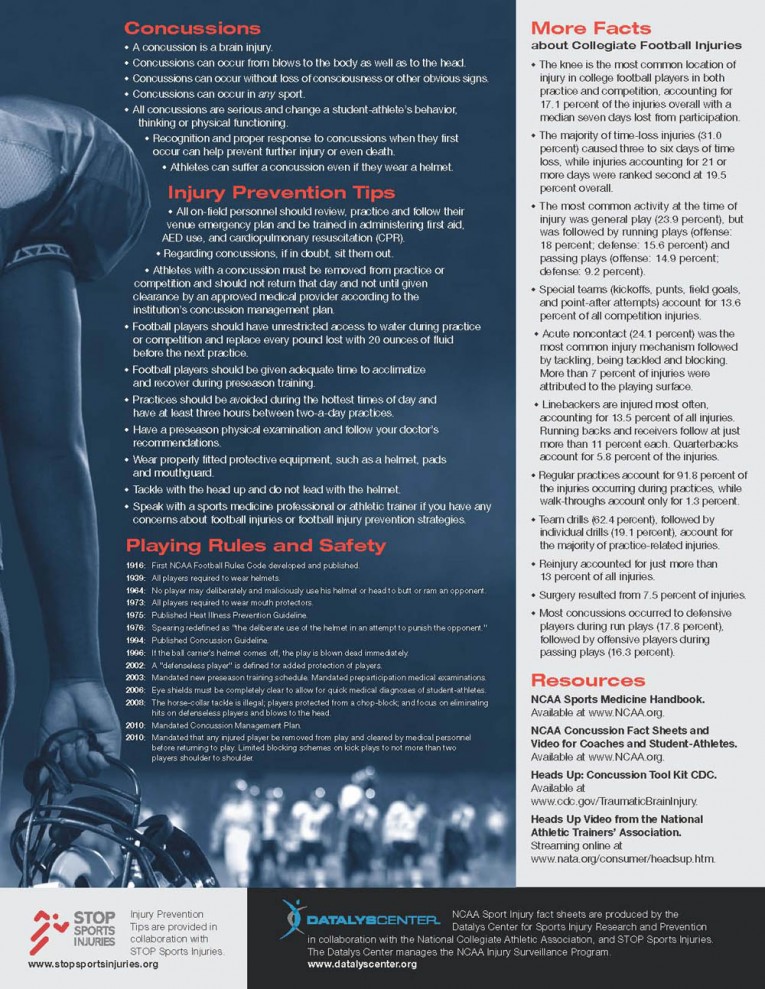Hearing the debate on the hurry-up-no-huddle offense and injuries, facts seem to be scarce.
To support any contention, facts need to support the proposition. In order to say that the hurry-up-no-huddle offenses create more injuries, there needs to be a link BY CAUSE between the style of play (not simply a team) and injuries. Causal connections between real world events and injuries can be done, but they require much study to connect the dots. Maybe the data exists. Maybe it doesn’t. Looking for it and paying attention to many reporters, it doesn’t appear readily available so it’s subject to some debate. This post enters the fray only to bring a few facts for you to use regardless of where you stand in the argument.
People’s memories, including sports reporters’ memories, are really short it seems because the pop logic is that Bret Bielema must want to impose a 10 second snap rule to combat the hurry-up-no-huddle offenses in order to slow down those teams by rule because his defenses can’t slow them down on the field. To that end, if an accurate poll was taken of fans and reporters digging for their true thoughts to the question “What two SEC offenses did Bret Bielema’s Arkansas defense have the most trouble with in 2013?”, almost certainly the overwhelming majority would believe that the two teams were Auburn and Texas A&M. So what two offenses did Arkansas’ defense have the most trouble with in 2013? The answers are South Carolina and Alabama. The Razorbacks gave up 52 points against each and allowed total yards of 537 and 532 respectively. In terms of total yards, neither Texas A&M nor Auburn were third either. Ole Miss rolled up 532 yards. Cold facts cool a lot of hot air. If one was to say that Arkansas’ defenses had trouble with everyone in 2013, that would be more fair, but it hardly singles out a specific problem with hurry-up-no-huddle offenses.
Also, let’s at least clean up the perception that some have that the hurry-up-no-huddle offense is a relatively recent fad. Within the memories of some, the University of Houston ran a version of the hurry-up offense in the late 1980s called the “run-and-shoot.” Even for 1989 season, Ken Hatfield’s more-deliberate-than-Bielema’s offense beat the Andre Ware lead (Heisman Trophy winning) Houston Cougars to a victory. But let’s face it, there are few original concepts in the world. Hurry-up offenses have been around since at least 1901 or so as Michigan coach Fielding H. Yost played that style of ball to 6 national championships. One of his proteges was University of Arkansas Coach Frank Longman who installed the hurry-up offense in Fayetteville.
From the Deseret evening news., Salt Lake City, Utah, November 17, 1906, Last Edition, Page 14, (see the bottom of the first column, “Yost’s Apt Pupils” :
Also as a matter of history, just prior to this time, the Intercollegiate Athletic Association of the United States, which became the NCAA, was formed to deal with the great number of injuries and even deaths from playing the game.
Fast forward to today, what are injury rates and/or death rates in college football today? It doesn’t matter which side of the ten-second debate you’re on, know what the injury facts are.
The information from the Datalys Center, NCAA and STOP Sports Injuries is below and may be found at http://datalyscenter.org/resources/sports-injury-facts/ for more sports than football. If you want to argue about injuries, heart conditions, sickle cell anemia and death rates, here are some hard data.







66 Responses
Comments are closed.